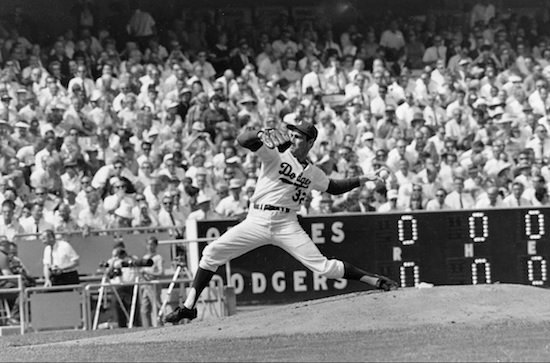Come see landmark-worthy Caton Park and the Parade Ground where Sandy Koufax played baseball
Eye on Real Estate

Sandy Koufax, shown here during Game 2 of the 1966 World Series, is one of the many baseball greats who played at the Prospect Park Parade Ground in their youth. AP file photo
What a magic place for baseball fans.
The tiny neighborhood known as Caton Park is nestled up against the Prospect Park Parade Ground — where pros who earned at least 50 World Series rings played amateur baseball in their youth.
This roster includes Baseball Hall of Famers from Phil Rizzuto to Joe Torre to Sandy Koufax.
